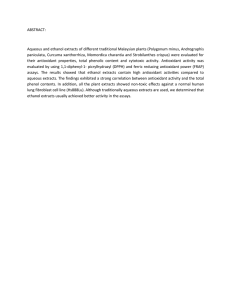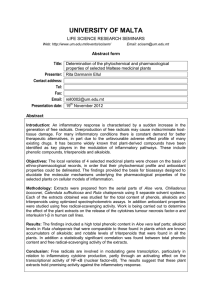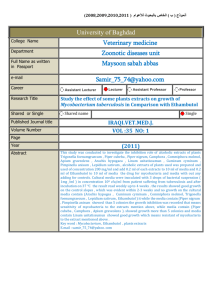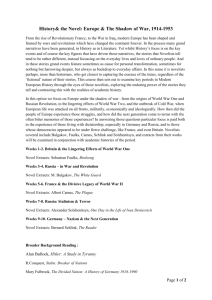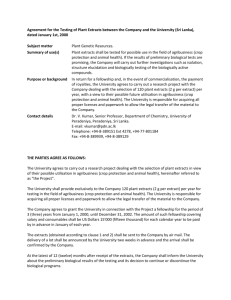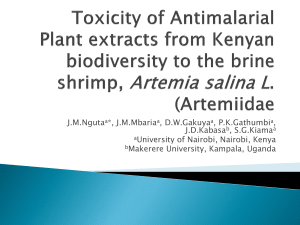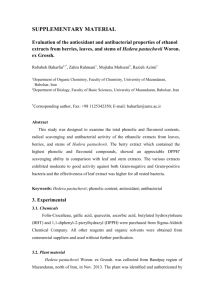Functionality Studies of Antrodia Cinnamomea Extracts in vitro and
advertisement
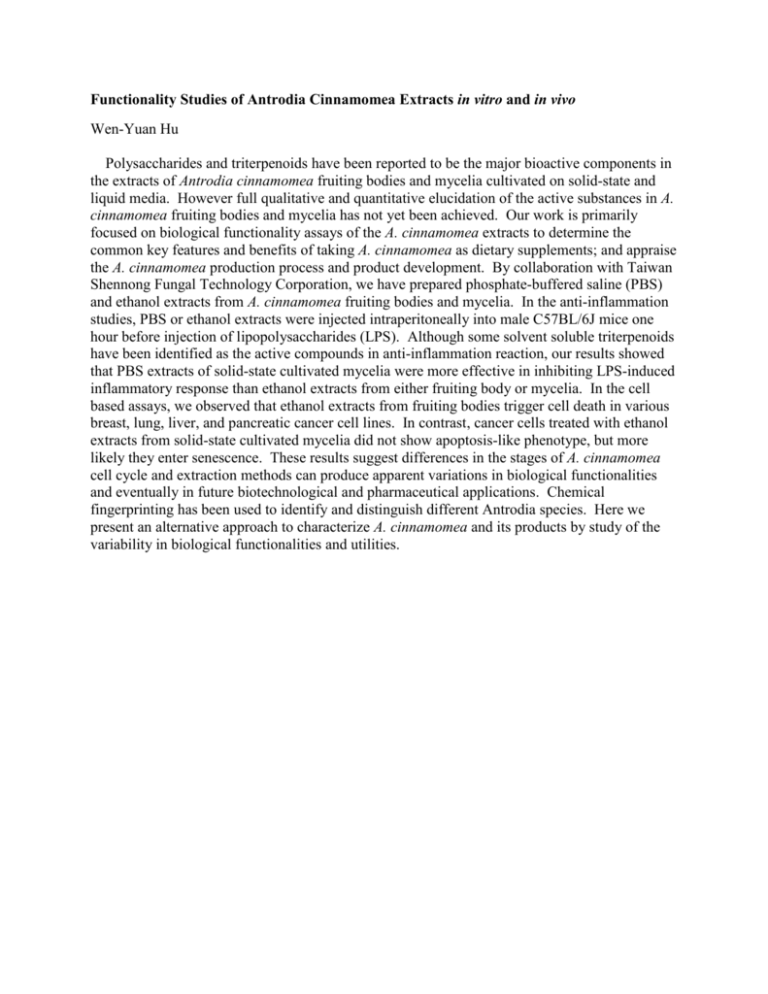
Functionality Studies of Antrodia Cinnamomea Extracts in vitro and in vivo Wen-Yuan Hu Polysaccharides and triterpenoids have been reported to be the major bioactive components in the extracts of Antrodia cinnamomea fruiting bodies and mycelia cultivated on solid-state and liquid media. However full qualitative and quantitative elucidation of the active substances in A. cinnamomea fruiting bodies and mycelia has not yet been achieved. Our work is primarily focused on biological functionality assays of the A. cinnamomea extracts to determine the common key features and benefits of taking A. cinnamomea as dietary supplements; and appraise the A. cinnamomea production process and product development. By collaboration with Taiwan Shennong Fungal Technology Corporation, we have prepared phosphate-buffered saline (PBS) and ethanol extracts from A. cinnamomea fruiting bodies and mycelia. In the anti-inflammation studies, PBS or ethanol extracts were injected intraperitoneally into male C57BL/6J mice one hour before injection of lipopolysaccharides (LPS). Although some solvent soluble triterpenoids have been identified as the active compounds in anti-inflammation reaction, our results showed that PBS extracts of solid-state cultivated mycelia were more effective in inhibiting LPS-induced inflammatory response than ethanol extracts from either fruiting body or mycelia. In the cell based assays, we observed that ethanol extracts from fruiting bodies trigger cell death in various breast, lung, liver, and pancreatic cancer cell lines. In contrast, cancer cells treated with ethanol extracts from solid-state cultivated mycelia did not show apoptosis-like phenotype, but more likely they enter senescence. These results suggest differences in the stages of A. cinnamomea cell cycle and extraction methods can produce apparent variations in biological functionalities and eventually in future biotechnological and pharmaceutical applications. Chemical fingerprinting has been used to identify and distinguish different Antrodia species. Here we present an alternative approach to characterize A. cinnamomea and its products by study of the variability in biological functionalities and utilities.
